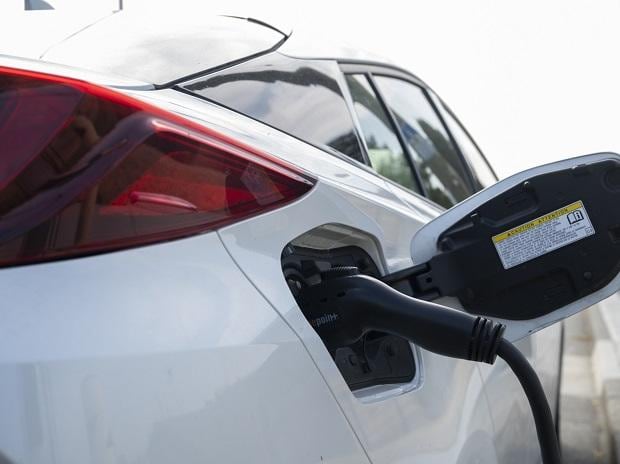India’s electric vehicle (EV) industry has touched the milestone of one million unit sales in calendar year 2022, accounting for 4.7 per cent of overall automobile sales.
According to data on the government’s Vahan website, about 1,003,000 EVs have been registered with regional transport offices till December 31. The numbers show a more than threefold increase from 332,000 units sold in 2021.
The numbers do not include data from Telangana and Lakshadweep.
The rise in sales was on the back of high individual buying and Business-to-Business (B2B) purchases by EV fleet operators. Adaptation of FAME II and building of charging infrastructure adding to the EV penetration in the country.
Manufacturers such as Ola Electric, Ather Energy, and Tata Motors are the big gainers from the higher adoption of EVs.
Monthly sales of EVs crossed the 100,000 mark in October, November and December on festival season demand and year-end discounts. E-vehicle registrations in December were 102,000 units, compared with 115,000 and 119,000 units sold in October and November, respectively.
Though December turned out to be a bad month for the overall industry in terms of sales, Tata, the biggest player in the four-wheeler segment, crossed the 50,000 EV milestone.
“Our aggressive approach in the EV segment helped us create the right awareness and expand our customer base, making us the first auto manufacturer in India to cross the 50,000 EV sales milestone this year,” Shailesh Chandra, managing director, Tata Motors Passenger Vehicles and Tata Passenger Electric Mobility said.
Tata Motors holds an 85 per cent market share in the electric passenger vehicle segment.
Going by this year’s trends, the next 12 months may see EV sales crossing 100,000 every month, according to industry estimates.
Challenges ahead
According to the Society Of Manufacturers Of Electric Vehicles (SMEV) the sector is likely to see a 30 per cent conversion from internal combustion engine to electric by 2025. However, reluctance on the part of the auto industry to invest more in EVs, lack of long-term policy along with rising number of Covid cases put the sector at high risk.
“A long-term policy with greater focus on sourcing, a strong supply chain for crucial raw materials such as rare earth metals, and country-level arrangements are the need of the hour to avoid overdependence on midstream suppliers such as China. If these aren’t in place, the EV industry’s growth plans could be impacted,” said Manu Sharma, spokesperson, SMEV.
Moreover, if the supply chain is disrupted due to Covid, there will be a shortage of raw material and semiconductors, Sharma said.
Though the industry sees higher demand in 2023, most players are in wait-and-watch mode due to Covid.
The industry has enough supply for the last quarter of FY22, but after that there will be a raw material crunch if there is any halt in January, said an executive of a top-5 two-wheeler EV player in the country.
The fresh Covid wave is severe in China and most of the factories there are working at 50 per cent strength.
However, for India it is a wait-and-watch moment, said Samrath Kochar, founder & CEO, Trontek.
“There is no clarity on supplies beyond January and the orders for January either are in transit or are lying at warehouses in China. We are keenly observing the developments in China,” Kochar said.
Manufacturing activity in China declined sharply in December 2022, according to data released on Saturday by that country’s National Bureau for Statistics (NBS). The Purchasing Managers’ Index (PMI) in December 2022 fell to 47, from to 48 the previous month. China posted a dip for the third month in a row.
High cost and few financing options are also a challenge for the industry. “Cost factor, and financial institutions’ reluctance to provide bank loans is a sour selling point for EVs,” Aditya Reddy, VP, Sales & Marketing, EVeium Smart Mobility said.
The government has set an ambitious goal for EVs to make up 30 per cent of private cars, 70 per cent of commercial vehicles, and 80 per cent of two- and three-wheelers by 2030.
The auto industry currently has a very healthy order book, especially passenger vehicles. The servicing of these orders will require higher quantities of semiconductors, as these are largely high-end models. Semiconductor supply, though it is improving, is still not back to normal levels, Mansi Lall, research analyst, Prabhudas Lilladher said.
Note:- (Not all news on the site expresses the point of view of the site, but we transmit this news automatically and translate it through programmatic technology on the site and not from a human editor. The content is auto-generated from a syndicated feed.))




I don’t think the title of your article matches the content lol. Just kidding, mainly because I had some doubts after reading the article. https://www.binance.com/join?ref=P9L9FQKY
Your point of view caught my eye and was very interesting. Thanks. I have a question for you. https://www.binance.com/zh-CN/join?ref=VDVEQ78S
Thanks for sharing. I read many of your blog posts, cool, your blog is very good.
Hi i am kavin, its my first time to commenting anywhere, when i read this
piece of writing i thought i could also make comment due
to this good paragraph.
Your point of view caught my eye and was very interesting. Thanks. I have a question for you.
I constantly spent my half an hour to read this webpage’s content every day along with a cup of coffee.